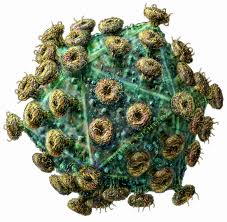Beyond the mere identification of cells, Cell Surface Markers has the potential to revolutionize stem cell research and drug discovery.
Immunophenotyping Immunophenotyping holds immense potential in the field of drug discovery. Reverse engineering, the idea that we can discover the biological or technological principles of something by studying its external structure and operation, allows scientists to develop new drug targets.In other words, by studying the exterior surface cell markers, one can determine the internal structure of the cell, perhaps even at the genomic and DNA level. [13,16,17] The process of drug delivery starts with the identification of appropriate drug targets. Only then can suitable drugs be developed to specifically and effectively target diseases or problems.This step is greatly aided by immunophenotyping in which the many clusters of differentiation are cataloged according to their presence in a sample. Once the targets, the surface proteins and carbohydrates, are identified, suitable drugs can then be developed to work on these specific molecules. [13,16,17] For example, new drug targets are being found on the surface of cancer cells. Besides being used for identification purposes, the clusters of differentiation serve as new targets for chemotherapeutic drugs. If drugs can be developed to work on the clusters of differentiation, it is possible that the cancer cells can be specifically targeted. [13,16,17] 
Disease Progression In addidtion, immunophenotyping aids with therapy-related disease progression. With the ability to efficiently analyze large samples of cells at an individual cellular level, it is possible to compare the diseased cells with that of the treated cells. This allows us to ascertain what the differences between healthy and diseased cells are. This aids in the development of new drugs that can specifically work to spark the changes that occur during treatment.[13,16,17] Because immunophenotyping allows us to measure multiple parameters, one can examine a cluster of cells at all points in the cell cycle. This is helpful because it allows scientists to pinpoint the exact point at which a biological process or chemical reaction may have gone wrong. Then a drug can be developed to rectify the error. [13,16,17]  Above is a picture of the HIV virus |
 Above is the T-Cell receptor complex. The shapes labeled as epsilon, delta and gamma represent the CD-3 cell surface markers present on T-cell lymphocytes Personalized Medicine In addition,
immunophenotyping provides potential in the area of personalized medicine. Many
medications today are applied to broad groups of people. As such, many
treatments do not work for the entire population. For example, while
chemotherapy may effectively treat some kinds of cancer in most patients, it
may be rendered ineffective in others. However, immunophenotyping, by image
analysis or flow cytometry, allows scientists to gather data that predicts
therapeutic resistance in patients. It also allows for predicting the
susceptibility of patient groups to later disease occurrence. Since every
individual may have slightly differing surface cell markers,
different treatments may be needed. [13,16,17]
 Besides the obvious structural differences between cancerous and healthy cells, different markers are present on the cell membrane. For example, the cluster of differentiation CD-45 is present in leukemia cells. HIV HIV is a virus that infects healthy cells and uses the cellular machinery to replicate its genetic code. The HIV virus uses a specific cell surface marker to gain access into the cells. This cluster of differentiation is know as CD4 and is a glycoprotein expressed on the surface of helper T-cells and other cells. [9] As such, HIV infection causes a severe reduction in the number of helper T-cells expressing the cluster of differentiation CD4 on their surfaces. This change in number of surface proteins present can be used to effectively test for HIV. Also, there is hope that a drug can be developed to perhaps treat this
cluster such that HIV can no longer infect. [9]
|
Cancer In addition, please watch this video as it explains not only the concept behind using surface cell markers, but also how it can be used to identify cancer cells. The process of identifying these cells is the same as for identifying any others. Because the clusters of differentiation are know, one can identify the cells through immunophenotyping. This leads to hope that drugs will be developed to specifically target cancer cells. Currently, chemotherapy may treat cancer, but it also attacks every cell in your body. By targeting certain markers, the drugs can become specialized and attack only the cancer cells.
|
Besides the few applications named above, there are many more applications, ranging from cancer and nanotechnology using biosensors to stem cells. To learn more, visit the PubMed Central at http://www.ncbi.nlm.nih.gov/pmc/.